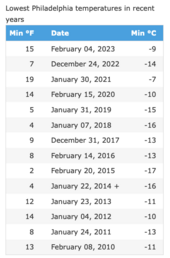JUMPSTART
New Member
QUESTION: Can I go with the NMOT (Real World Conditions) as opposed to the SCT (Optimal Conditions) or is it too risky or do I definitely risk over voltage (Damage to my Solar Generator) at colder temperatures when the panel generates more?
.... Is there a max stated on the panel that it will "never" generate more?,... or will any panel always generate more below 77 degrees?
.... In Other Words: I want to max out my 2,100 Watt Input, (Many of these panels might be over my max voltage), Realize people say you will never see these optimal ratings. Am I chancing it?
.... We know this SCT test is done at 77 degrees (25 Celcius) but also at optimal light conditions
Solar Generator (has its own MPPT) Solar Input Max: 0-150 V / 2,100 W / 15 A
Looking to buy panels now. (probably 4 in series as I FEAR EXCEEDING AMPS) (Series: Voltage Increases / Amps Stay Same)
... I would like to reach my 2,100 W Input Max. All the nice panels I have found would exceed my Amps Max of 15 Amps.... SCT RATING.
IS IT SAFE TO USE THE (MNOT) DATA INSTEAD? Looks like I am limited to around 550 W etc panels as each panel voltage stays around 49.0 Volts (but 49 X 4 = 196... Exceeding my 150 V). Amps seem to be the hard one here as it's very easy to exceed this 15 Amp Max.
SCT CALCULATIONS SAY: EX: ( To not exceed my max )
VOLTAGE - 4 Panels (series) 37.5 V each Xs 4 = 150 V
WATTAGE - 4 Panels Xs 525 W each = 2,100 W
.... Parrallel (Voltage stays same / Amps Increase) is out of the question (15 Amps Max) = 4 Panels Xs 3.75 Amps each = 15 Amps Max ...(pretty whimpy panel)
AMPS ,... It only "pulls" in porportion to Volts / Watts? (So amps are not an issue?)
Solar Generator is pretty nice so I'm wondering if it has built in protection.
We all know the panels will (Never?) generate their SCT rating.... I just don't want to ($1,000) then find out I'm not doing anything and should have "chanced" bigger.
TWO MPPT CHARGE CONTROLLERS CONFLICT ? - (One from panel & the generator has one built in) ...Also tried researching CURRENT REGULATORS? / VOLTAGE REGULATORS.... I think this 'is" a charge controller. Not sure how my generator would like it,... not to mention finding the perfect one.
This is an OUPES (new company) Generator (and they want to get out there so very inexpensive") Much like the Delta Pros for MUCH LESS. I was surprised to see such high voltage input capability.
.... Is there a max stated on the panel that it will "never" generate more?,... or will any panel always generate more below 77 degrees?
.... In Other Words: I want to max out my 2,100 Watt Input, (Many of these panels might be over my max voltage), Realize people say you will never see these optimal ratings. Am I chancing it?
.... We know this SCT test is done at 77 degrees (25 Celcius) but also at optimal light conditions
Solar Generator (has its own MPPT) Solar Input Max: 0-150 V / 2,100 W / 15 A
Looking to buy panels now. (probably 4 in series as I FEAR EXCEEDING AMPS) (Series: Voltage Increases / Amps Stay Same)
... I would like to reach my 2,100 W Input Max. All the nice panels I have found would exceed my Amps Max of 15 Amps.... SCT RATING.
IS IT SAFE TO USE THE (MNOT) DATA INSTEAD? Looks like I am limited to around 550 W etc panels as each panel voltage stays around 49.0 Volts (but 49 X 4 = 196... Exceeding my 150 V). Amps seem to be the hard one here as it's very easy to exceed this 15 Amp Max.
SCT CALCULATIONS SAY: EX: ( To not exceed my max )
VOLTAGE - 4 Panels (series) 37.5 V each Xs 4 = 150 V
WATTAGE - 4 Panels Xs 525 W each = 2,100 W
.... Parrallel (Voltage stays same / Amps Increase) is out of the question (15 Amps Max) = 4 Panels Xs 3.75 Amps each = 15 Amps Max ...(pretty whimpy panel)
AMPS ,... It only "pulls" in porportion to Volts / Watts? (So amps are not an issue?)
Solar Generator is pretty nice so I'm wondering if it has built in protection.
We all know the panels will (Never?) generate their SCT rating.... I just don't want to ($1,000) then find out I'm not doing anything and should have "chanced" bigger.
TWO MPPT CHARGE CONTROLLERS CONFLICT ? - (One from panel & the generator has one built in) ...Also tried researching CURRENT REGULATORS? / VOLTAGE REGULATORS.... I think this 'is" a charge controller. Not sure how my generator would like it,... not to mention finding the perfect one.
This is an OUPES (new company) Generator (and they want to get out there so very inexpensive") Much like the Delta Pros for MUCH LESS. I was surprised to see such high voltage input capability.
Last edited:



